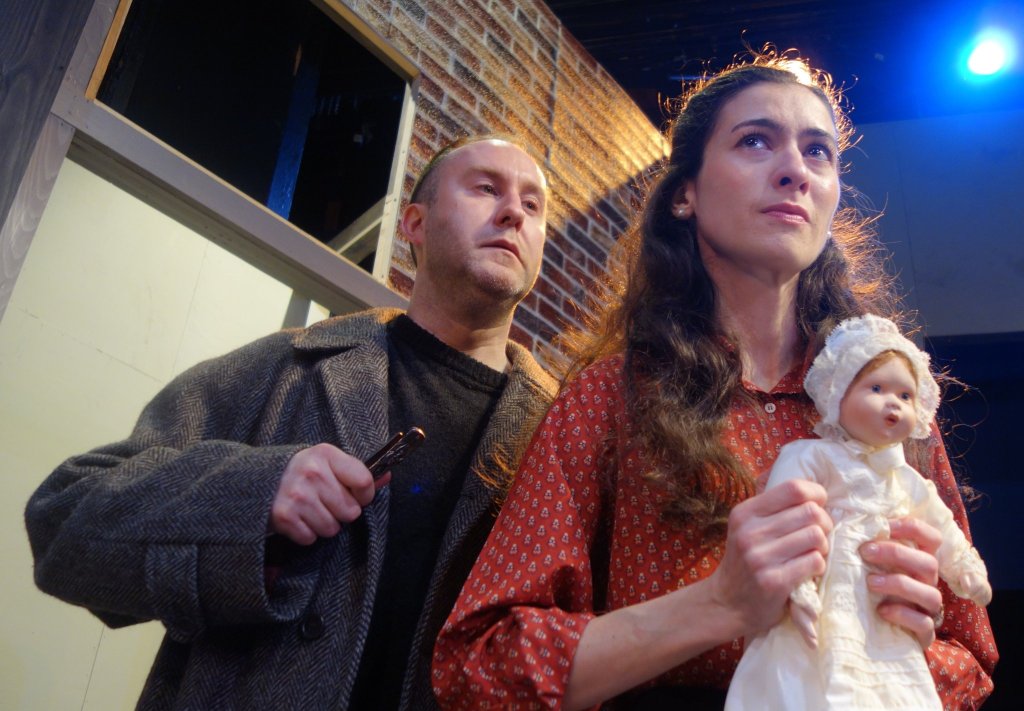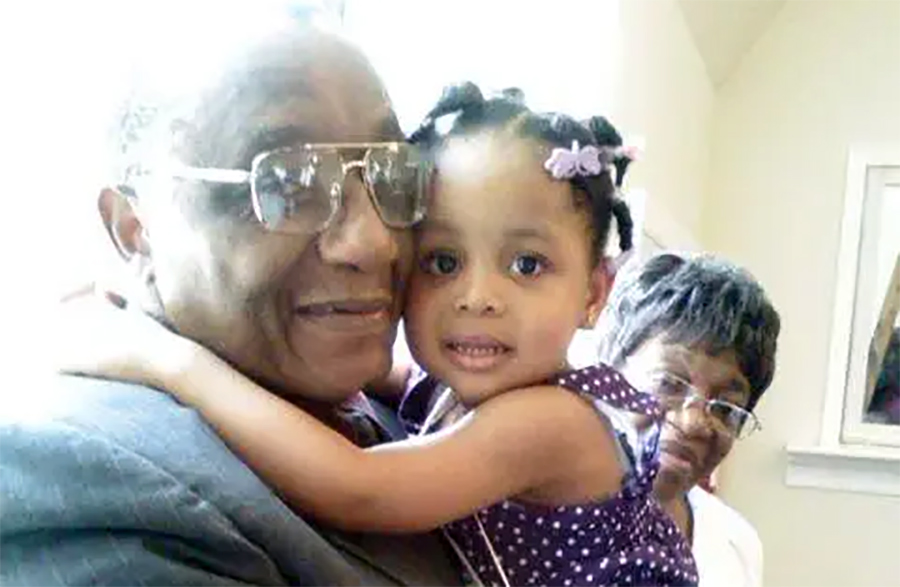Militias: George Washingon’s Hamptons Patriots Fought and Died for NYC

If you wander among the tombstones in the Old Burying Ground next to the Old Whalers’ Church in Sag Harbor, you will see the final resting place of more than a dozen patriots who participated in the Battle of Long Island on August 27, 1776. Many of them died during that battle. Others survived that conflict to live long and successful lives. What is of interest, however, is how these men, mostly between 18 and 30 years old in 1776, came to fight on the Jamaica Plain in Brooklyn that year. The battle took place nearly 100 miles away from Sag Harbor, a distance traversed by dirt trails, in what was the only set-piece battle to take place on our island.
The prize, of course, was New York City. With it, if the rebels lost—and they did lose—all of Long Island would fall with it, and General Washington would have to flee with the remainder of his troops through New Jersey across the Delaware River to a ragged winter encampment at Valley Forge, Pennsylvania. As a result of this battle, Washington could only mount persistent ambushes and hit-and-run attacks against the Redcoats. He never again faced the British in a battle of this magnitude. Thus, the Battle of Long Island, with 35,000 Redcoats on one side and 15,000 rebels on the other, was the largest battle of the war.
But first things first. The Boston Tea Party took place in December of 1773, and the British responded by imposing punishing taxes on the colonists. Eventually, in 1775, the British brought 7,000 troops to quell the trouble in Boston. George Washington’s small, ill-equipped Continental army, together with local town and village militias, fought them to a standstill. An 11-month siege of the bottled-up British forces in Boston followed, until, finally, the British left Boston by boat to regroup in Canada. As this outrage against the colonists unfolded, militias volunteered in small towns and villages throughout the Northeast, and these included East Hampton, Southampton and Southold.
When the British left Boston, the rebels knew it was not for good. Some said the British would return to mount a devastating assault on New York. New York City was the heart of the matter. Some predicted the British might send a force from London 10 times what they had brought to Boston. They wanted this rebellion ended. For the rebels, the job now was to build an enormous army to fight the British off. And they had to build it out of nothing.
Washington arrived in New York City commanding about 4,000 soldiers in May of 1776. On July 9, 1776, Washington assembled his men and read the Declaration of Independence to them. The job ahead would be tough, but it had to be done.
Washington sent men on horseback to Connecticut, New Jersey, Pennsylvania and states as far away as Maryland with written orders to locate the different town and village militias, deliver letters and have them form into County Regiments and come to New York City as soon as possible. The letter stated that one quarter of each militia should make the journey. The rest could stay home. As this was going on, Washington made drawings to show how each of the regiments, headed by a colonel, would be assigned to a different division, each headed up by a general. It seemed to Washington he could put together about five divisions. His total force would be about 15,000 men.
One of the riders, looking to bring in militiamen from Southampton and East Hampton, sought out a man named Josiah Smith. Smith had been born and raised in East Moriches. He married a Southampton girl, Suzanne, the daughter of a judge, in 1742. At the time he received the rider’s letter, he was 54 years old, the Treasurer of Suffolk County and a well-respected member of his community. The letter he was given came from a General Nathanial Woodhull of Mastic, named a general at the Continental Congress in 1775. “One [county] regiment has been made of the whole detachment, and you have been appointed to take the command of it.”
The militias of Southampton, East Hampton and Southold each sent off 125 eager volunteers. In paperwork, they were all named and assigned ranks as corporals, lieutenants, fifers, drummers, sergeants and “rank and file.”
I don’t here have room to list the names of all of these brave men. But I will name some. Many of the last names are familiar, because their descendants are still here as merchants, lawyers, doctors, farmers, fishermen and real estate agents. Josiah Howell, Jonathan Hedges, George Herrick, John Dayton, Issac Hunting, William Rogers, John White, Edward Conkling… They all went off, those in the eastern group under Colonel David Mulford (reporting to Smith) as the Second Battalion of Suffolk County.
Another 300 fighters came from the western part of the County, became the First Battalion of Suffolk County and were headed up by General Woodhull, now reassigned as a Colonel to that central Suffolk unit.
A few weeks later, another detachment from East Hampton and Southampton left for New York under Josiah Smith. They formed up a group called the Minute Men of Suffolk County and they numbered 409, headed up by Liev Colonel John Hulbert.
The British fleet was now bringing men to the wilderness of Staten Island. By mid-July, nearly 500 ships brought some 35,000 Redcoats, a stunning number designed to put an end to things once and for all. They had a plan to take New York City. Washington never learned about what it was until it was too late.In truth, it should be said that, though George Washington was a fierce patriot eager to fight, he had little knowledge of tactics and strategy in military matters.
He had not gone to any military academy. He was a wealthy planter from Virginia who, as a young man, went off with a crew to survey much of the wilderness in Pennsylvania and what later became Kentucky. Indians attacked them. He and his men left. Indians attacked other English settlers nearby, and someone in the colony thought this tall, handsome, self-assured young man on horseback should lead a force to defeat the Indians.
Thus ordered, Washington contacted a tailor in London and had him create and then ship to him the grand military uniform he subsequently always wore in battle. His unit subsequently fought the Indians and the French who supported them. He fought four battles. He won only one. Lost the other three.
Washington, now on his white horse and in New York, did properly put together his rag-tag army as it arrived. Seeing the British assembling in these alarming numbers on Staten Island, he decided to spread out his forces and wait to see where the British would attack. He stationed 6,000 men in Manhattan. Another 7,000 he arrayed atop a six-mile ridge that extended west to east across much of the center of Brooklyn from Gowanus to a place called Jamaica Plain. The remaining 2,000 were to defend Washington’s headquarters, on the shore of Brooklyn Heights. Manhattan was just across the way. From here, he would command his side of the upcoming battle.
Both the First and Second Battalions of the Suffolk Division were assigned to the very eastern end of the battle line at Jamaica Plain. Their job as soldiers was to round up cattle and provide provisions for what was now the 7,000-man army lined up just to their west, extending back to Gowanus. The Second Battalion (from the Hamptons, now under Smith) became scouts and advance units in the front of the ridge.
Meanwhile, Liev Colonel Hulbert’s Minutemen from Southampton and East Hampton, with Captains Ezekiel Mulford, Selah Rogers and David Peirson in charge, were assigned
a position defending the roads coming up into the headquarters at Brooklyn Heights from the South.
On the morning of August 22, 1776, the Redcoats began to ferry their 35,000-man army across from Staten Island to Gravesend, Brooklyn, not far from where the Verrazano Bridge is today. Over the next three days, they formed up into two groups. The first, 30,000 men, went north to prepare for a head-on assault of the American army lining the ridge. Redcoats probing the front line encountered Smith’s First Battalion. Smith kept a diary. Shots were fired. Individuals on both sides were killed. The second 5,000 Redcoats, led by British General John Grant, marched up the western shoreline of Brooklyn toward the American headquarters at Brooklyn Heights until they were stopped by the defenses of, among others, the Regiment of Minutemen of Suffolk County.
Grant’s march looked like a big deal, but it wasn’t. It was a feint. It was designed to get Washington to shift men to the west to stop Grant’s assault and get them away from where the British really intended to strike. Washington took the bait. And that’s how the day before the beginning of the big battle ended.
After the sun set, the group of 30,000 Redcoats facing the ridge divided up. 15,000 remained where they were. But the other 15,000 quietly marched east through the woods until they found a break in the ridge at Jamaica Plain, where the American line ended. The intent of this massive force was to cross this plain and install themselves behind the rebels. The only soldiers guarding the break at Jamaica Plain were Smith’s Second Battalion, out front doing sentry work. “We was alarmed about 2 in the morning and had many skirmishes and they attempted to force our lines & they killed 1 of my men & we suppose that we killed a number of them & we drove them back & lay in the trenches all night,” he wrote.
Also blocking the British were the horseback-riding cowboys of the First Suffolk County Battalion. The British circled around Smith—he never knew they had gone past him in that woods—and easily overwhelmed Woodhull’s battalion, finding Colonel Woodhull in a tavern. As he would not swear an oath to the King, one of the Redcoats beat him about the head and stabbed him in the arm before a more sympathetic British officer stopped the attack. Woodhull was taken prisoner and lived only another month, dying in New Utrecht, Brooklyn, still under British guard.
The following morning, the rebels woke to find themselves with the British both in front and behind them, with a total force more than twice theirs. The Redcoats attacked, and before that day was over the rebel army had broken and begun a hasty retreat toward headquarters at Brooklyn Heights (“…we was alarmed aboute 2 in the morning that our army was leaving our lines on Long Island”). A famous stand by a group of 400 Maryland militiamen held off the Redcoats long enough for all the rebels to make it—after which the Maryland militiamen were overwhelmed.
The British Army had won. General Howe could have his men charge in with bayonets and bullets and take the survivors prisoner. Instead, he decided to lay a siege. It would be less bloody. The Americans had their backs to the wall and would soon surrender.
For seven years after that, all of Long Island was under the thumb of the British. All residents in these parts had to sign a document pledging their allegiance to the King. Many of the young men who had served in the regiments along with Colonel Josiah Smith and other rebels crossed Long Island Sound to Connecticut and remained there for the rest of the war, which finally ended in 1783.



